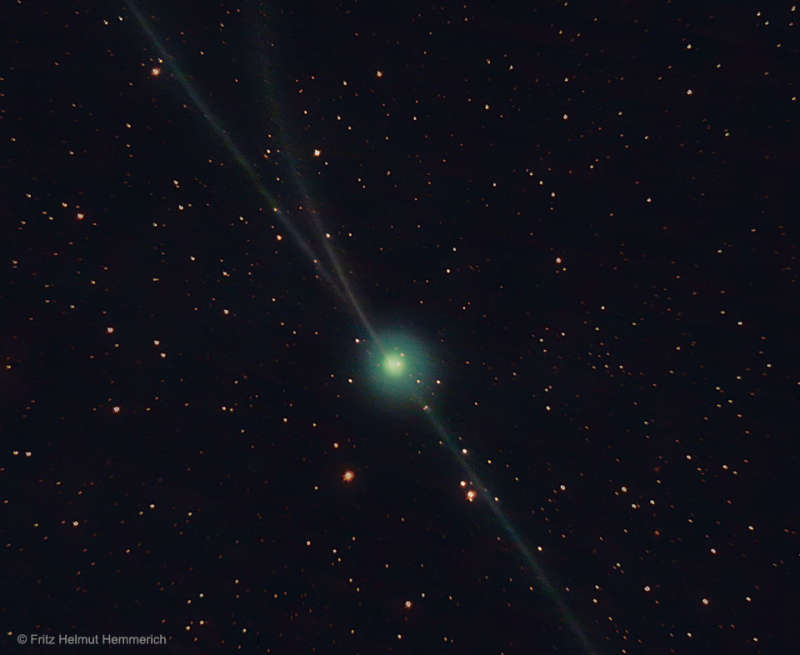 |
Астронет: Астрономическая картинка дня Почти три хвоста кометы Энке http://variable-stars.ru/db/msg/1376390/eng |
Credit & Copyright: Fritz Helmut Hemmerich
Explanation:
How can a comet have three tails?
Normally,
a comet has
two tails: an
ion tail
of charged particles emitted by the comet and pushed out by the wind from the Sun,
and a
dust tail of small debris that orbits behind the comet but is also pushed out,
to some degree, by the solar wind.
Frequently a comet will appear to have only
one tail
because the other tail is not easily visible from the Earth.
In the
featured
unusual image,
Comet 2P/Encke appears to have three
tails because the ion tail split just near to the time when the image was taken.
The complex solar wind is occasionally
turbulent and sometimes creates
unusual
structure in an ion tail.
On rare occasions even
ion-tail disconnection events have been recorded.
An image of the Comet Encke taken two days later gives a perhaps
less perplexing perspective.
Authors & editors:
Robert Nemiroff
(MTU) &
Jerry Bonnell
(USRA)
NASA Web Site Statements, Warnings,
and Disclaimers
NASA Official: Jay Norris.
Specific
rights apply.
A service of:
LHEA at
NASA /
GSFC
& Michigan Tech. U.
